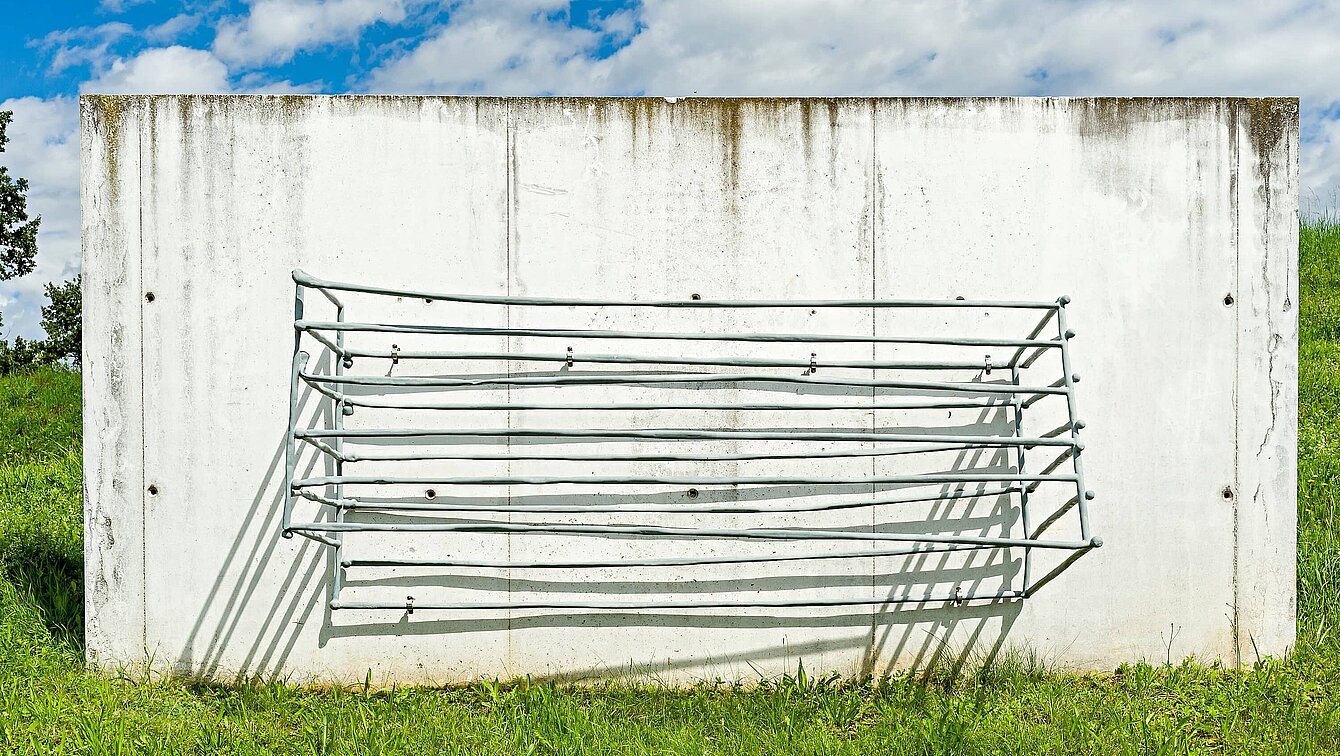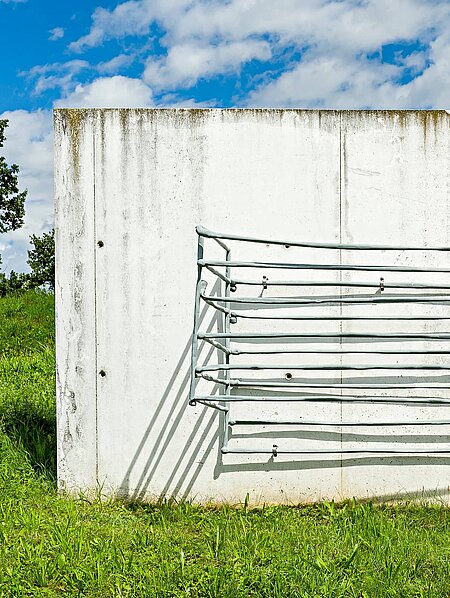Oberhuber’s sculptures are always in some way linked to space, architecture or furniture. Korb also reacts to the space that surrounds it, depending on the incidence of light and perspective. This is a simple construction welded together from iron rods and attached to a wall, but looks from a distance like a complicated, multi-dimensional cuboid because of the shadows it casts. The objective reference to a basket remains—through the artistic treatment, however, it also becomes an abstract geometric body.
Korb
Oswald Oberhuber, 1989


Image Credits
Author
Christa Steinle
Location on map
Position 15
Owner
Österreichischer Skulpturenpark Privatstiftung
Artist biography
Oswald Oberhuber
Show all
About the sculpture
Oswald Oberhuber developed an artistic multi-media universe from the 1950s onwards which made him a highly valued, outstanding leader of the development of Modernism in Austria.
In 1970 Oberhuber made two artistic contributions for an exhibition entitled “österreichische kunst – skulpturen, plastiken, objekte” (Austrian art – sculptures, objects) at the Schloss Eggenberg park within the context of the “steirische herbst” art festival. His works, “Zwei Holzkisten” (Two wooden boxes) and “Haus ohne Dach” (House without a roof) – constructions made of raw timber slats – highlight his radical sculptural concept, somewhere between architecture and object. In the design of his sculptures, Oberhuber has no anthropomorphic or physically abstract approach, but positions the sculpture in reference to space, architecture or furniture. He would frequently fix his sculptures to the wall and not place them on the ground. Hence the determining factor for his sculptural concept is a so-called “syntax of space” (Peter Weibel), so that for each of his sculptures we have an open system of reference of object description.
The iron construction mounted on a white concrete wall in the Skulpturenpark also reacts according to the incidence of light and the perspective of the beholder to the surrounding space. A simple construction welded together could be perceived as a complicated cuboid from afar. Its constructive rods cast shadows, which interfere with the real rods thus giving the cuboid the complexity of a supra-dimensional structure, which at the same time resolves its puzzle. In this way, a closed form becomes open geometry. The graphic reference to a basket – varying between a trough and a real basket – is preserved; at the same time, however, with artistic treatment, the basket becomes an abstract geometrical body. Syntax and function are thus fused.


















